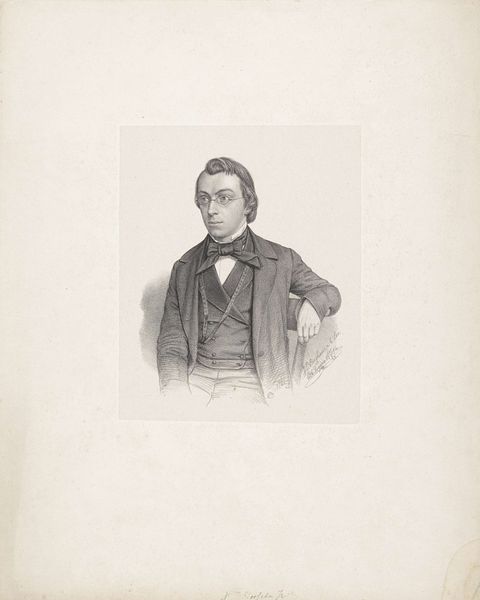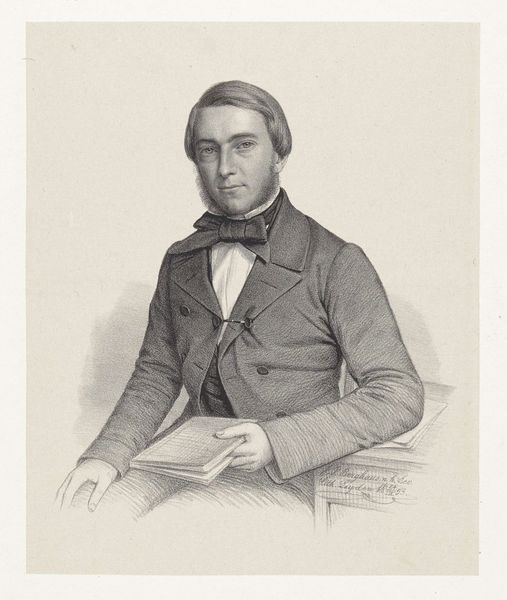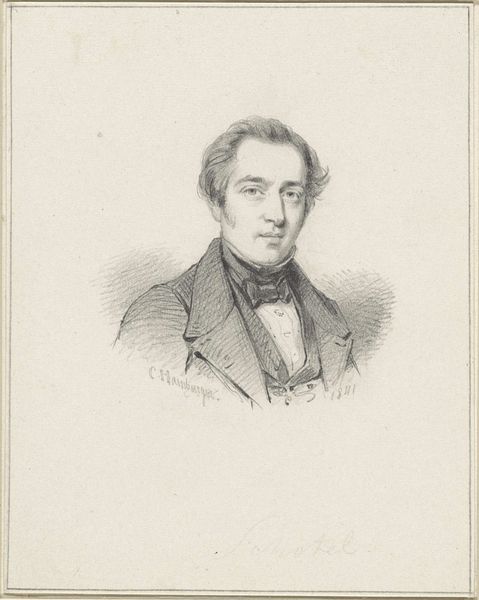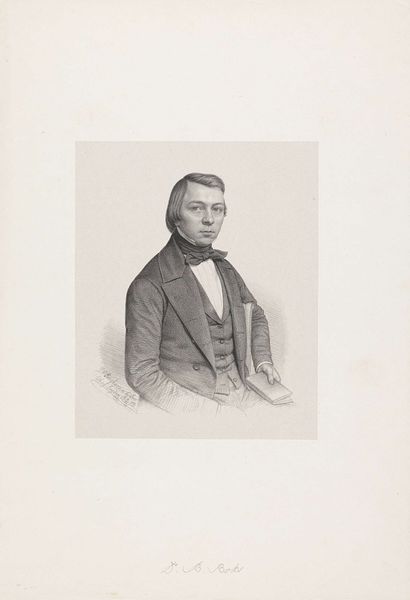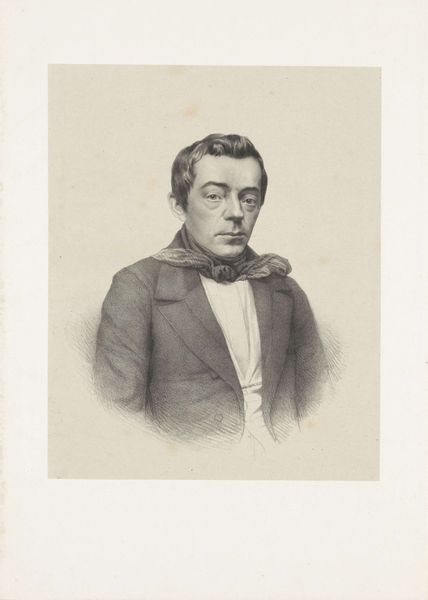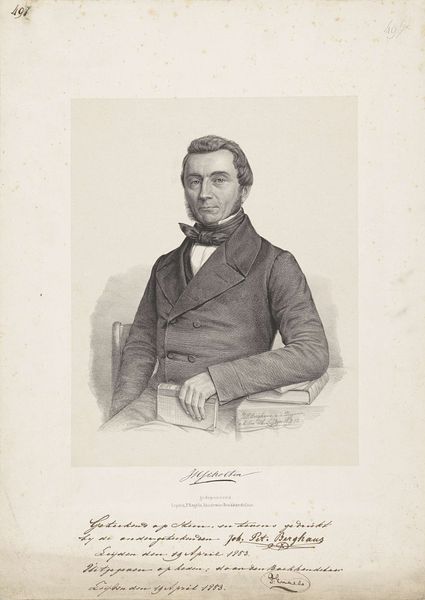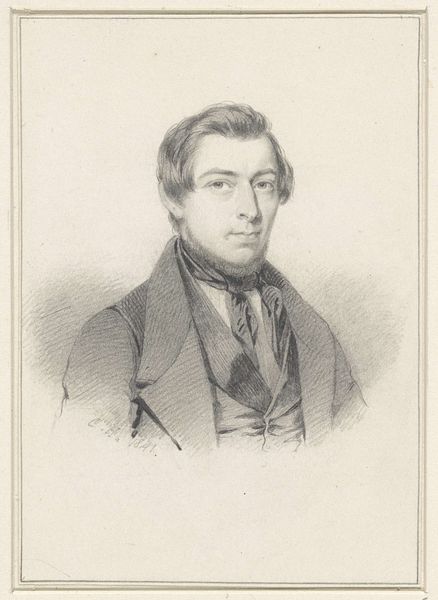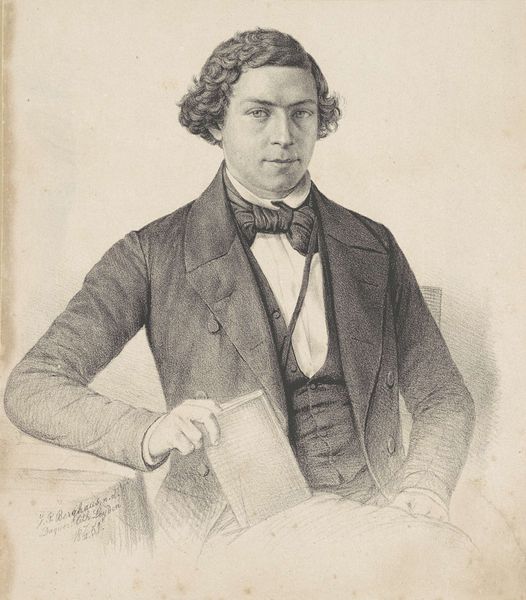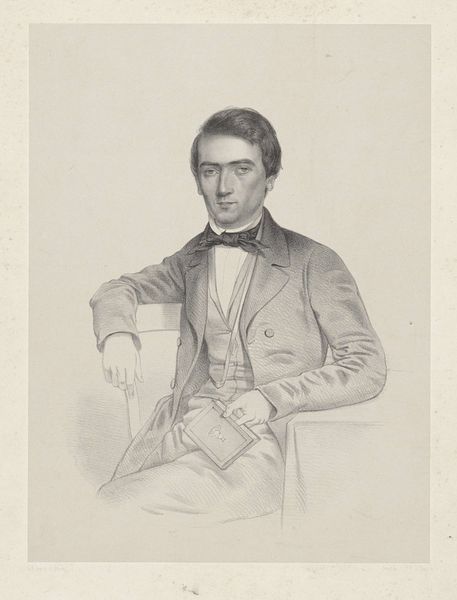
Portret van Volkert Simon Maarten van der Willigen Possibly 1855
0:00
0:00
johannpeterberghaus
Rijksmuseum
drawing, pencil, graphite
#
portrait
#
drawing
#
pencil sketch
#
pencil drawing
#
pencil
#
graphite
#
portrait drawing
#
academic-art
#
realism
Dimensions: height 366 mm, width 260 mm, height 440 mm, width 325 mm
Copyright: Rijks Museum: Open Domain
Curator: This is a pencil drawing titled "Portret van Volkert Simon Maarten van der Willigen," believed to have been created around 1855 by Johann Peter Berghaus. It resides here at the Rijksmuseum. Editor: My initial reaction is how surprisingly contemporary this feels. The shading is incredible and, despite the formal attire, there's an approachability to the subject that transcends the period. Curator: Absolutely. Berghaus was known for his realist style, seeking to capture a true likeness of his subjects. Portraits during this period were heavily influenced by academic art, reflecting the sitter's social standing. Editor: You can definitely read the markers of class and profession through his clothing, his posture, but his eyes are incredibly expressive. It pushes against the more rigid, performative portraiture conventions. I'm curious, what do we know about van der Willigen himself? Curator: Van der Willigen was a prominent figure in the Dutch scientific community, particularly known for his contributions to physics and mathematics. He held significant positions, including directorship of Teyler's Physics Cabinet in Haarlem. Editor: It's compelling how art serves to record these influential figures. How accessible would you say artwork like this was to the wider public? Curator: That's an important consideration. While portraits of prominent individuals were often commissioned and displayed, their accessibility to the masses might have been limited, largely circulating within specific social and intellectual circles. The rise of museums as public institutions certainly helped broaden access. Editor: I can imagine a kind of subtle, underlying commentary even in something as apparently straightforward as a portrait that speaks to who is given recognition and how representation gets shaped by prevailing power structures. Curator: That's precisely the lens through which we should be examining historical works like this, constantly interrogating the forces at play. Editor: Definitely gives me food for thought! It also serves as an interesting document of the cultural values of the era and how status was visibly encoded. Thanks! Curator: My pleasure. And hopefully, it allows a glimpse into both art history and social commentary.
Comments
No comments
Be the first to comment and join the conversation on the ultimate creative platform.
